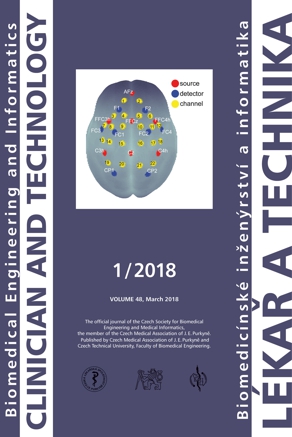DIMENSIONALITY REDUCTION METHODS FOR BIOMEDICAL DATA
Keywords:
biomedical data, dimensionality, biostatistics, multivariate analysis, sparsityAbstract
The aim of this paper is to present basic principles of common multivariate statistical approaches to dimensionality reduction and to discuss three particular approaches, namely feature extraction, (prior) variable selection, and sparse variable selection. Their important examples are also presented in the paper, which includes the principal component analysis, minimum redundancy maximum relevance variable selection, and nearest shrunken centroid classifier with an intrinsic variable selection. Each of the three methods is illustrated on a real dataset with a biomedical motivation, including a biometric identification based on keystroke dynamics or a study of metabolomic profiles. Advantages and benefits of performing dimensionality reduction of multivariate data are discussed.
Downloads
Published
Issue
Section
License
Copyright (c) 2018 Jan Kalina, Anna Schlenker

This work is licensed under a Creative Commons Attribution 4.0 International License.
Authors who publish with this journal agree to the following terms:
- Authors retain copyright and grant the journal right of the first publication with the work simultaneously licensed under a Creative Commons Attribution License (https://creativecommons.org/licenses/by/4.0/) that allows others to share the work with an acknowledgment of the work's authorship and initial publication in CTJ.
- Authors are able to enter into separate, additional contractual arrangements for the non-exclusive distribution of the journal’s published version of the work (e.g., post it to an institutional repository or publish it in a book), with an acknowledgment of its initial publication in this journal.
- Authors are permitted and encouraged to post their work online (e.g., in institutional repositories or on their website or ResearchGate) prior to and during the submission process, as it can lead to productive exchanges.
CTJ requires that all of the content of the manuscript has been created by its respective authors or that permission to use a copyrighted material has been obtained by the authors before submitting the manuscript to CTJ. CTJ requires that authors have not used any copyrighted material illegally, as for example a picture from another journal or book, a photo, etc. It is the author’s responsibility to use only materials not violating the copyright law. When in doubt, CTJ may ask the authors to supply the pertinent permission or agreement about the use of a copyrighted material.
The opinions expressed in CTJ articles are those of authors and do not necessarily reflect the views of the publishers or the Czech Society for Biomedical Engineering and Medical Informatics.


